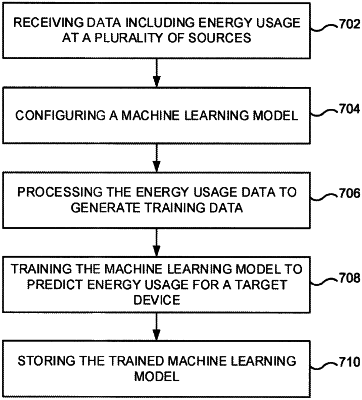| CPC G06N 5/04 (2013.01) [G06N 20/00 (2019.01); G06Q 50/06 (2013.01)] | 20 Claims |

|
1. A method for disaggregating energy usage associated with a target device, the method comprising:
storing a trained machine learning model configured to disaggregate target device energy usage from source location energy usage, wherein a plurality of parameters of the trained machine learning model are trained to predict an amount of energy usage for the target device from source location energy usage;
receiving source location energy usage over a period of time, wherein the source location energy usage includes energy consumed by the target device;
generating, based on the received source location energy usage, disaggregation predictions for the target device using the trained machine learning model,
wherein the disaggregation predictions comprise a set of predicted energy usage values that span the period of time, each predicted energy usage value of the set corresponding to a window of time over the period of time, and
wherein the generating includes progressing input data through the trained machine learning model, the progression applying the trained plurality of parameters to the input data to generate the disaggregation predictions for the target device;
determining a subset of the set of predicted energy usage values that are inconsistent with predicted supplemental detections with respect to target device energy usage; and
adjusting the subset of predicted energy usage values by an amount energy usage.
|